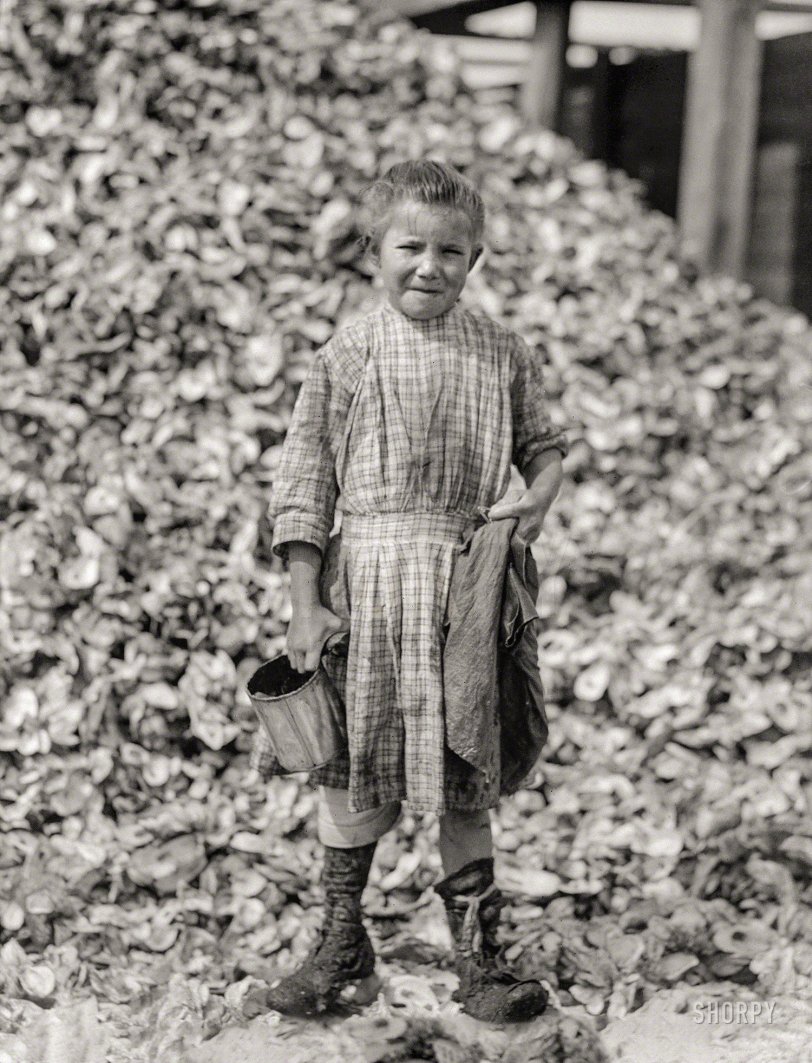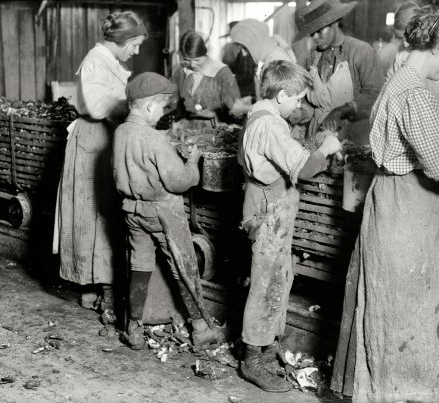


Framed or unframed, desk size to sofa size, printed by us in Arizona and Alabama since 2007. Explore now.
Shorpy is funded by you. Patreon contributors get an ad-free experience.
Learn more.

- Freeze Frame
- Texas Flyer wanted
- Just a Year Too Soon
- WWII -- Replacing men with women at the railroad crossing.
- Yes, Icing
- You kids drive me nuts!
- NOT An Easy Job
- I wonder
- Just add window boxes
- Icing Platform?
- Indiana Harbor Belt abides
- Freezing haze
- Corrections (for those who care)
- C&NW at Nelson
- Fallen Flags
- A dangerous job made worse
- Water Stop
- Passenger trains have right of way over freights?
- Coal
- Never ceases to amaze me.
- Still chuggin' (in model form)
- Great shot
- Westerly Breeze
- For the men, a trapeze
- Tickled
- Sense of loneliness ...
- 2 cents
- Charm City
- What an Outrage
- Brighton Park
Print Emporium
Tiny Shucker: 1912

February 1912. "Tiny, a seven-year-old oyster shucker (sister of Henry, No. 3291), does not go to school. Works steady. Been at it one year. Maggioni Canning Co. Port Royal, South Carolina." Photograph by Lewis Wickes Hine. View full size.
I think a bit misleading
I shucked oysters as a thirteen yo female in my family's restaurant in Louisiana. The leverage it takes to break the hinge on the oyster would be beyond her ability, I would say, but who knows. I would think her job would have been to break apart the clusters of oysters with a hammer to separate them for the shuckers.
[Not misleading. They used knives. She was one of hundreds. - Dave]

The other side of seafood
No idea what it's like today, but I saw a lot of how the seafood industry worked in Florida in the mid-1960s. My dad, for a couple of years, was manager of what was at that time the largest seafood company in the U.S. To teach me the value of an education, he arranged for me to work at one of the plants in Marathon, Florida, that "processed" fresh mackerel. Beheading, gutting, and rinsing the fish and putting them into a wire basket was the task when the fishing boats came in, and that began at four in the morning. It took 11 cleaned fish to fill the wire basket, and you got 25 cents a basket. I was supposed to do that for a week; one day was all I could manage and I'll never forget it.
Later, when living in Apalachicola, Florida, I'd go down to the packing plants where older black women shucked oysters. These women were so skilled it was almost beyond belief, and they had worked together so long that it seemed like a social event as they joked and sang and teased each other. That proved, to me, their tough spirit and great skill. The work was not only not fun but tedious and dangerous; handling those peculiar stiff-bladed oyster knives was not something you did without paying attention. I did admire those women so and was proud they accepted me as a friend.
Child Labor
Poor kid already looks like someone's grandma.
I've consumed many an oyster
But have shucked nary a one. Still, judging from the heavy gloves sturdy adults use when performing that task, I am surprised that this poor little waif has any hands left. I presume, of course, that she hadn't a tiny pair of work gloves, given her obvious place in the socio-economic hierarchy of Port Royal.
























On Shorpy:
Today’s Top 5